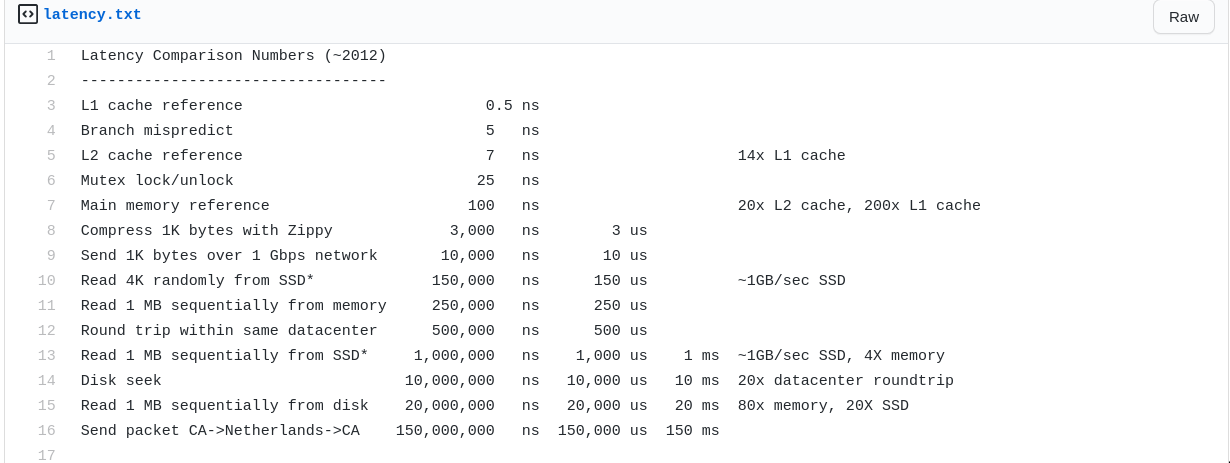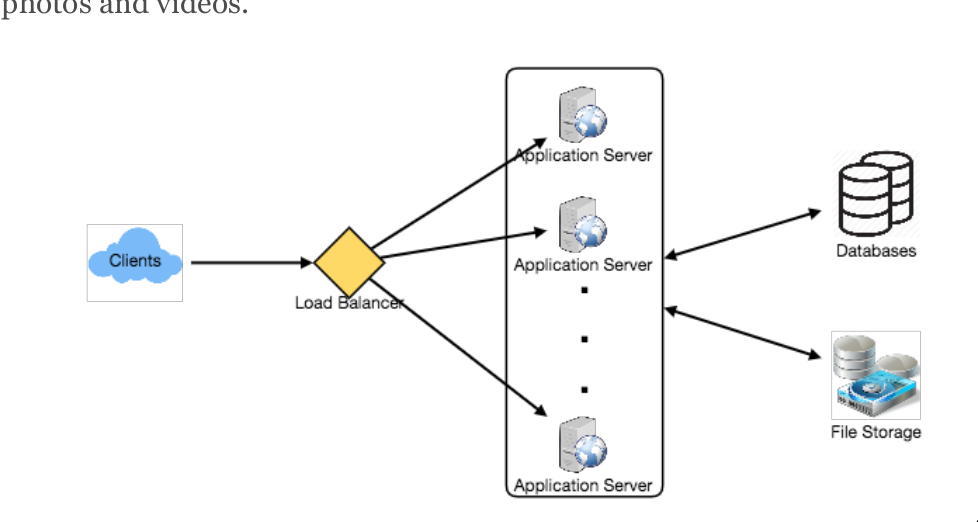Steps to design a system
Step 1: Requirement clarifications
Example of desigining a Twitter-like service:
- Will users of our service be able to post tweets and follow other people?
- Should we also design to create and display the user's timeline?
- Will users be able to search tweets?
Step 2: System interface definition

Step 3: Back-of-the-envelope estimation
Estimate the scale of the system we're going to design. This will also help later when will be focusing on scaling, partioning, load balancing and caching.
 https://www.freecodecamp.org/news/must-know-numbers-for-every-computer-engineer/
https://gist.github.com/jboner/28418322
https://www.freecodecamp.org/news/must-know-numbers-for-every-computer-engineer/
https://gist.github.com/jboner/28418322
Step 4: Defining data model
How data will flow among different components of the system. Identify various entities of the system, how they will interact with each other.
Define which database shoud we use? What kind of block storage should we use to store photos and videos?
Step 5: High-level design
Draw a block diagram with 5 - 6 box representing the core components of our system.

On the backend, we need an efficient database that can store all the tweets and can support a huge number of reads. We will also needs a distributed file storage system for storing videos and files.
Step 6: Detailed design
Present different approaches, their pros and cons. Explain why we will prefer one approach on the other, tradeoffs between different options
- Since we will be storing a massive amount of data, how should we partition our data to distribute it to multiple databases
- How we handle hot users who tweet a lot or follows lots of people?
- How much and at which layer should we introduce cache to speed things up?
Step 7: Identify and resolving bottlenecks
- Is there any single point of failure in our system? What are we doing to mitigate it?
- Do we have enough replicas of the data so that if we lose a few servers we can still serve our users?
- How are we monitoring the performance of our service? Do we get alerts whenever critical components fail or their performance degrades?